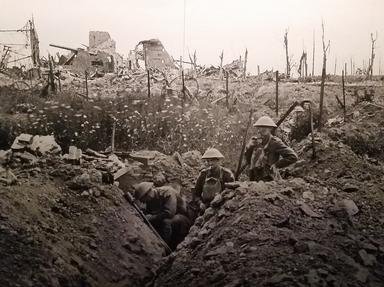Quiz Answer Key and Fun Facts
1. Chemical warfare was introduced during World War One. Which of the following 'gases' caused skin burns, blisters and damage to the respiratory tract?
2. Trench warfare became infamous during World War One, but it was actually a much older concept, dating back to the 17th Century. Who is credited with having invented trench warfare?
3. What important battle took place between August 26 and 30, 1914, in which the Russians suffered a disastrous defeat by the Germans?
4. What were the names of the British Admirals controlling the British Fleet in the Battle of Jutland?
5. Which World War One poet wrote the famous poem, 'Dulce et Decorum Est'?
6. Which pilot is reputed to have shot down the Red Baron?
7. What curious phenomenon was reported to have been seen by English and German troops during the Retreat from Mons?
8. What was the total number of Allied casualties in the Gallipoli (Dardanelles) Campaign of 1915-16?
9. What was the name of the battle that occurred in 1916 that resulted in the highest casualty rate of World War One and was intended to relieve pressure on Verdun?
10. What was the name of the Third Battle of Ypres?
Source: Author
TemplarLLM
This quiz was reviewed by FunTrivia editor
bloomsby before going online.
Any errors found in FunTrivia content are routinely corrected through our feedback system.

